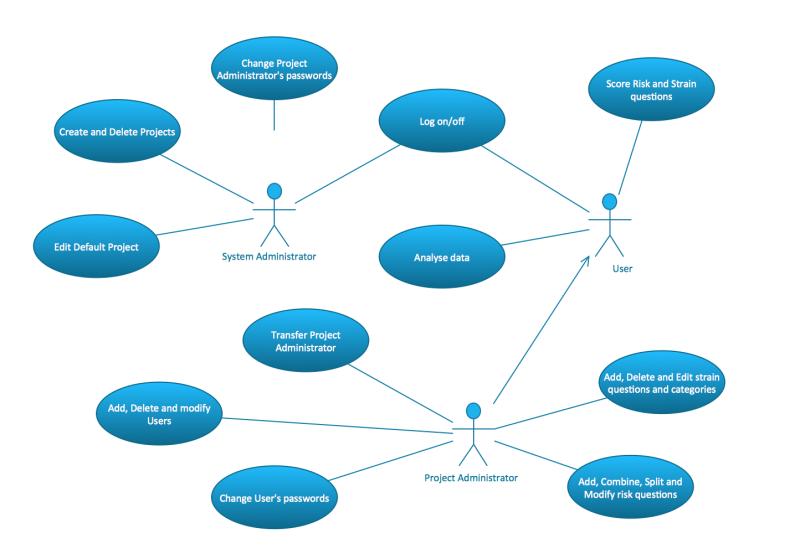How to structure a software project?
Structuring a software project is a crucial aspect of its development lifecycle. Proper project organization enhances collaboration, maintainability, and scalability. Below are key phases and considerations for structuring a software project:
1. Project Planning:
a. Define Requirements:
- Clearly outline the project's functional and non-functional requirements.
b. Set Goals and Scope:
- Define project goals, objectives, and the scope of work.
c. Identify Stakeholders:
- Identify and involve key stakeholders, including users, developers, and project managers.
d. Choose Methodology:
- Select a development methodology (e.g., Agile, Scrum, Waterfall) based on the project's nature.
2. Architecture Design:
a. Choose Architecture:
- Define the software architecture (e.g., monolithic, microservices) based on project requirements.
b. Module Breakdown:
- Divide the system into modular components based on functionality.
c. Database Design:
- Design the database schema and relationships if the project involves data storage.
d. Define APIs:
- If applicable, design APIs for communication between different components or external services.
3. Version Control:
a. Select Version Control System:
- Choose a version control system (e.g., Git) and create a repository for source code.
b. Branching Strategy:
- Define a branching strategy for managing different versions and features.
4. Coding Standards and Guidelines:
a. Establish Coding Standards:
- Define coding standards to ensure consistency across the codebase.
b. Code Review Process:
- Implement a code review process to maintain code quality.
5. Build and Continuous Integration:
a. Build System:
- Set up a build system (e.g., Maven, Gradle) to compile and package the application.
b. Continuous Integration:
- Implement continuous integration (CI) tools (e.g., Jenkins, Travis CI) to automate testing and deployment processes.
6. Testing:
a. Create Test Plans:
- Develop comprehensive test plans covering unit, integration, and acceptance testing.
b. Automated Testing:
- Implement automated testing to ensure code stability and catch regressions.
7. Documentation:
a. Code Documentation:
- Document code using inline comments and generate documentation if necessary.
b. User Documentation:
- Create user guides and manuals for end-users.
8. Deployment:
a. Environment Setup:
- Prepare development, testing, staging, and production environments.
b. Deployment Process:
- Define a deployment process, whether manual or automated, to move code to production.
9. Monitoring and Logging:
a. Implement Monitoring:
- Set up monitoring tools to track application performance.
b. Logging:
- Implement logging to capture and analyze system behavior.
10. Maintenance and Support:
a. Bug Tracking:
- Establish a system for tracking and resolving bugs.
b. User Support:
- Plan for user support and address user feedback.
11. Project Management:
a. Use Project Management Tools:
- Utilize project management tools (e.g., Jira, Trello) for tracking progress and managing tasks.
b. Regular Meetings:
- Conduct regular team meetings for updates, feedback, and issue resolution.
12. Security:
a. Implement Security Practices:
- Follow security best practices to protect the application from vulnerabilities.
b. Regular Security Audits:
- Conduct regular security audits to identify and address potential risks.
13. Scaling:
a. Plan for Scalability:
- Design the system with scalability in mind, considering potential growth in users and data.
b. Performance Optimization:
- Continuously optimize code and infrastructure for better performance.
14. Feedback Loop:
a. Feedback Mechanism:
- Establish a feedback loop for continuous improvement based on user feedback and project retrospectives.
Conclusion:
Structuring a software project is an iterative process that involves collaboration among team members and adaptability to changing requirements. The specifics may vary depending on the project's size, complexity, and industry standards. Regularly reassess the project structure to ensure it aligns with evolving needs and technologies.
Sure, here is a summary of the provided text:
Defining the project scope and objectives for effective software project structure
A well-defined project scope and objectives lay the foundation for a successful software project. The scope outlines the boundaries of the project, while the objectives specify the desired outcomes. Clearly defining these elements ensures that everyone involved in the project is on the same page and that the development effort is focused on achieving the desired results.
Establishing a project management framework and timeline for efficient execution
A project management framework provides a structured approach to planning, executing, and monitoring the project. It includes tools and processes for managing tasks, resources, and risks. A well-defined timeline breaks down the project into smaller, manageable phases and sets deadlines for each phase. This helps to keep the project on track and ensures that it is completed within the desired timeframe.
Implementing appropriate software development methodologies based on project requirements
The choice of software development methodology depends on the specific needs of the project. Some common methodologies include waterfall, agile, and DevOps. Waterfall methodologies are characterized by a linear, sequential approach, while agile methodologies emphasize flexibility and iterative development. DevOps is a collaborative approach that emphasizes communication and integration between development and operations teams.
By following these principles, you can establish a solid foundation for effective software project structure and increase the likelihood of project success.












